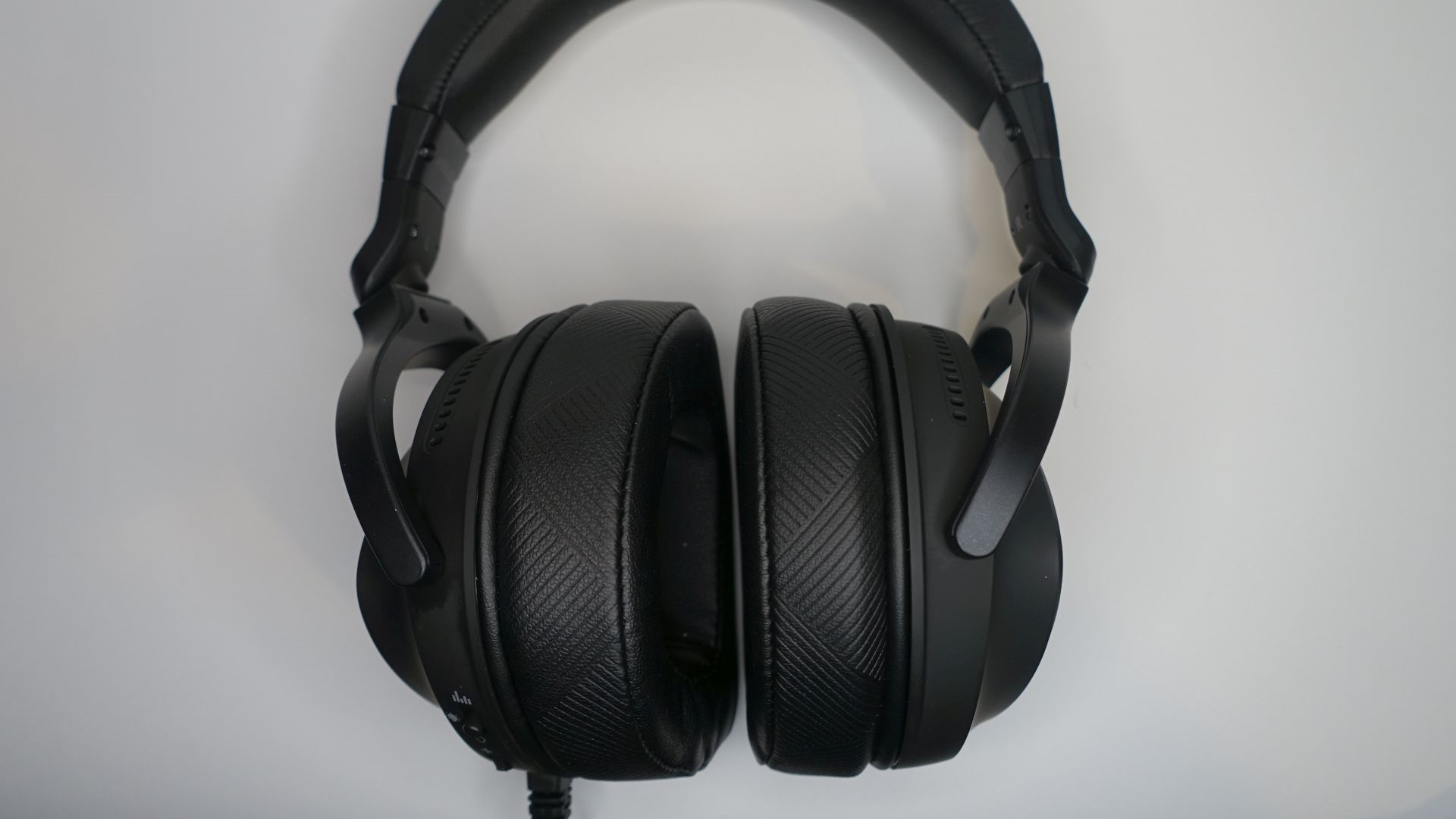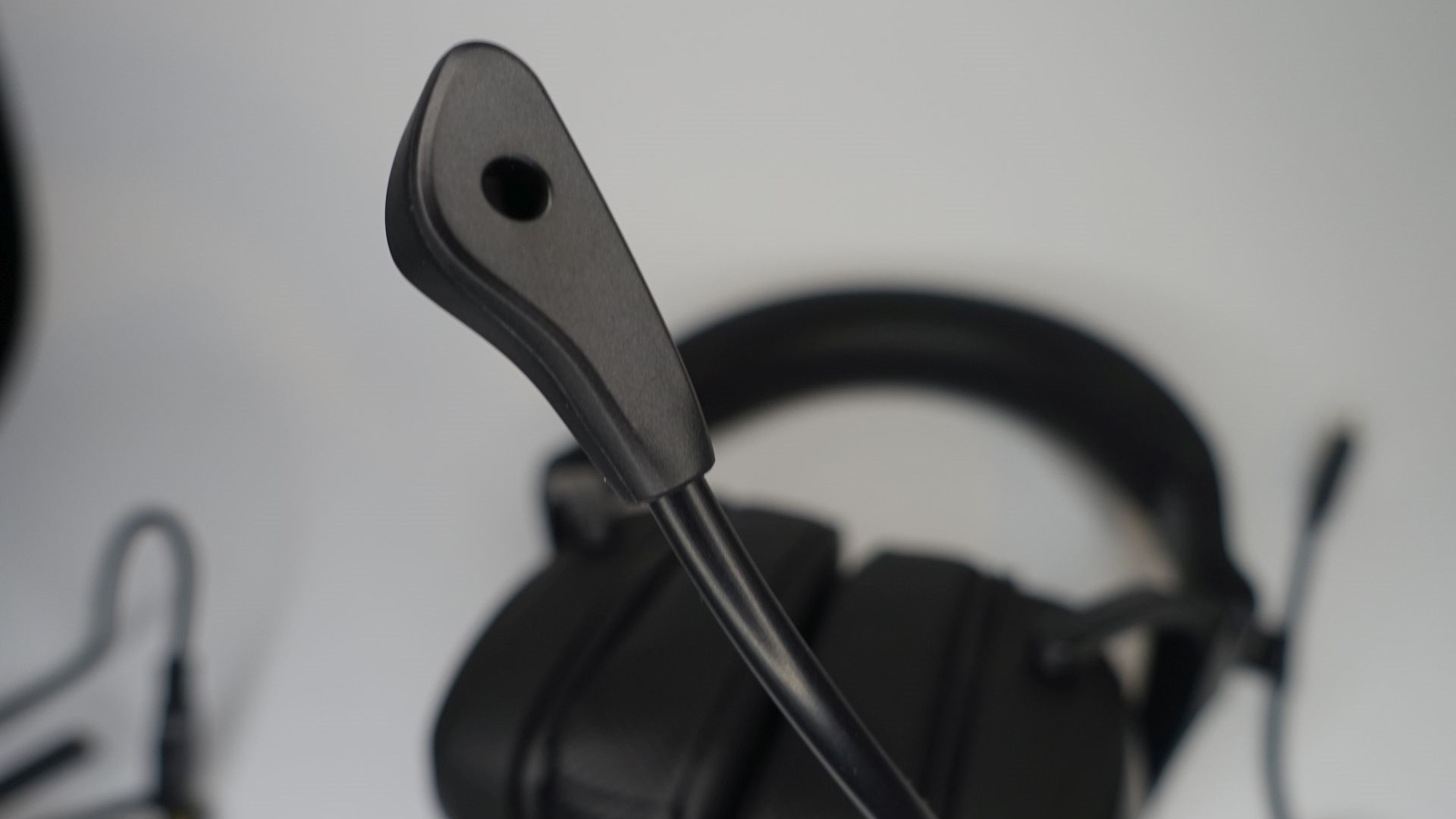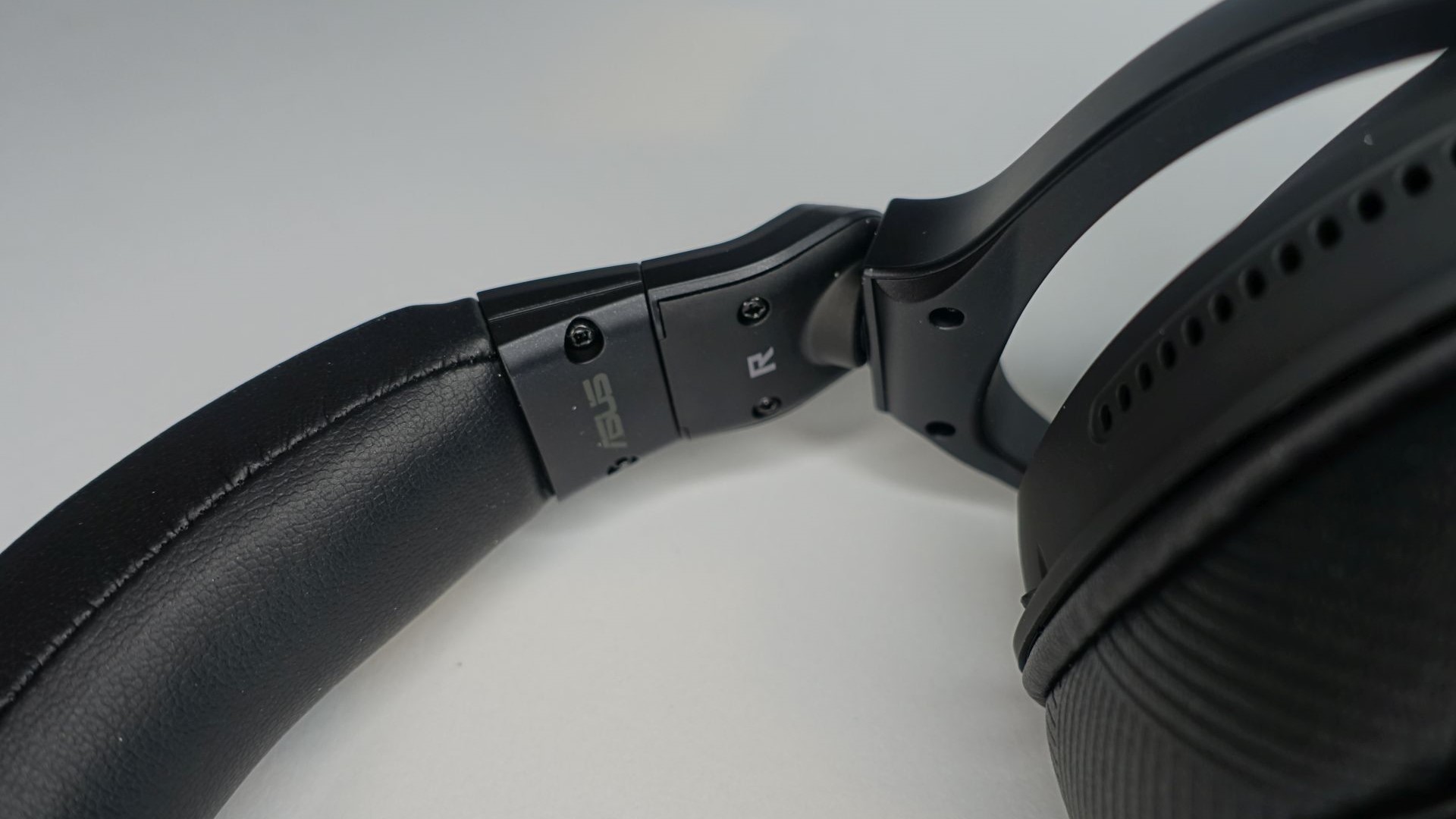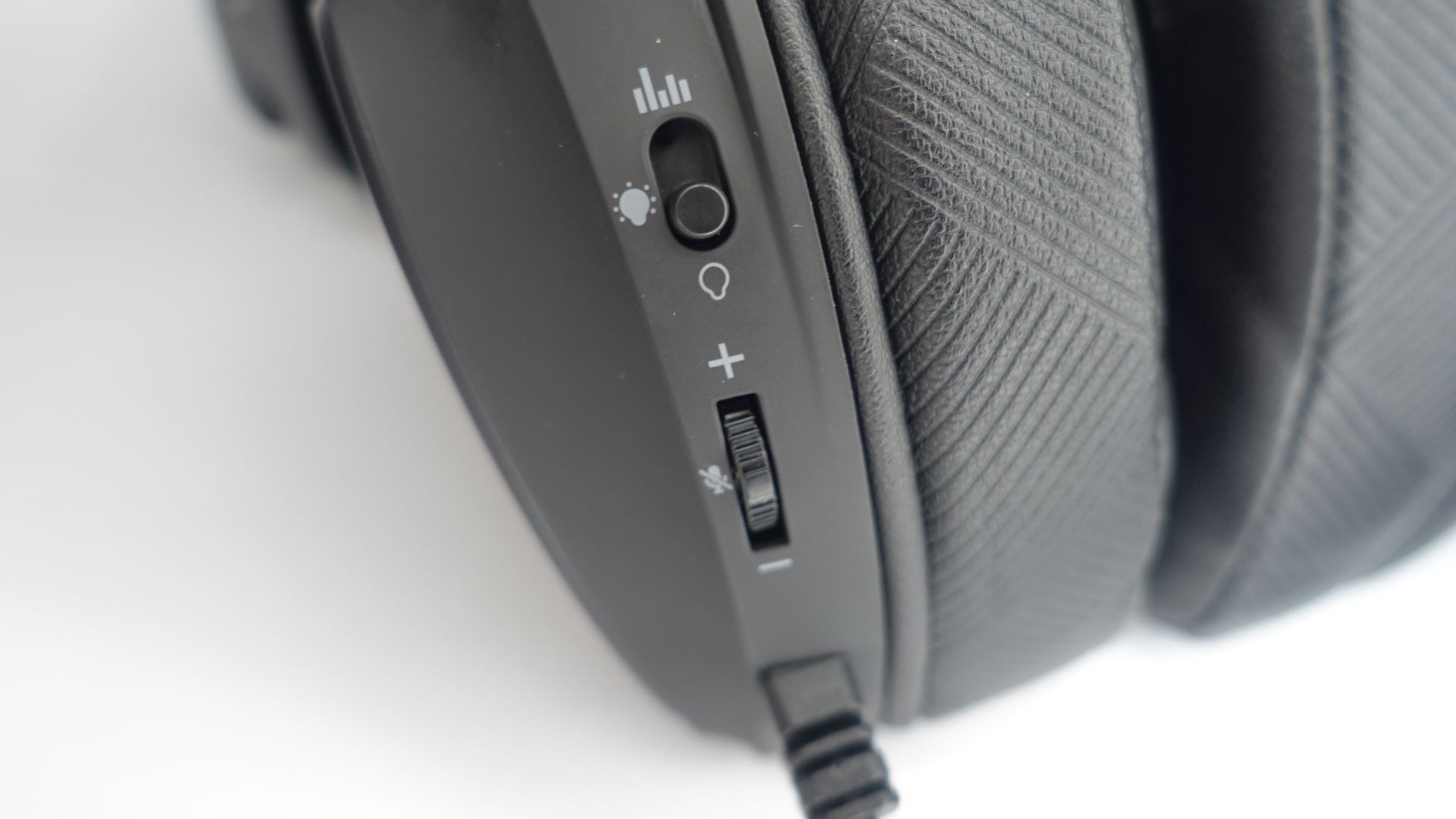Tom's Hardware Verdict
The Asus ROG Delta S comes to play with an excellent design, RGB lighting, superior sound from its Quad DAC and even an MQA renderer. If you want premium cans for both gaming and music, this might be the one.
Pros
- +
+ Amazing audio clarity
- +
+ Solid build quality
- +
+ Light, comfortable design and fit
Cons
- -
Short cable
- -
Slight sound leakage
Why you can trust Tom's Hardware
The Asus ROG Delta S builds on the design aesthetic of 2019's ROG Delta but improves upon it with an upgraded Quad Digital-to-Analog Converter (DAC) from ESS, a Master Quality Authenticated (MQA) renderer for Hi-Res audio and less weight, making what was already a solid headset even better.
Despite that, the ROG Delta S is a fantastic gaming headset. For those who demand high-end audio quality, the Quad DAC and MQA rendering technology go a long way towards this headset being a winner. And the wired USB-C and USB-A options means the ROG Delta S is a versatile performer, working with your PC, as well as Mac, PlayStation 4, PlayStation 5 (PS5) Xbox One and Nintendo Switch.
The Asus ROG Delta S stands up well against our list of the best gaming headsets, even if its $200 price tag will tax your wallet more than some of its immediate competition.
Asus ROG Delta S Specs
| Driver Type | 50mm neodymium |
| Impedance | 32 Ohms |
| Frequency Response | 20-40,000 Hz |
| Microphone Type | Condenser, noise-cancelling, detachable |
| Connectivity Options | USB Type-C, USB-C to USB-A adapter |
| Cables | 5 feet (1.52m) USB-C cable, 3 feet (0.91m) USB-A adapter cable |
| Weight | Headset only: 0.6 pounds (285g) |
| Headset, mic, cable: 0.7 pounds (320g) | |
| Lighting | 4x RGB zones |
| Software | Asus Armory Crate |
| Extra | USB-C to USB-A adapter , 1x extra pair ear cushions |
Design and Comfort




When I first pulled the Asus ROG Delta S out of its box, I was struck at how clean the design is. I prefer a more premium finish, but otherwise, the matte plastic of the body looks pretty good.
The earcups and bottom part of the headband is cast in a thicker black plastic without a ton of give or flex to it. Meanwhile, the top of the headband is covered in leatherette with the Republic of Gamers logo etched onto the top side and a soft memory foam pad underneath. Extending the earcup forks shows off metal extensions, allowing the Delta S to fit over larger heads without sacrificing stability. There's no exposed wires anywhere on the headband, so you won't have to worry about small wires getting caught on something when you move the headset around your desk. Exposed wiring is one of my pet peeves in terms of headsets, so I'm glad to see Asus address the matter here.
This thoughtfulness also applies to the earcups themselves. Out of the box, the Delta S has leatherette ear cushions. The leatherette is thin but quite soft and supple. But in warmer weather, your sweat could lead to an uncomfortable fit. The Delta S comes with a second set of ear cushions though. This second set is mostly fabric mesh, though the inner part of the cushions is still leatherette for noise isolation. Both options feel good, but I stuck with the leatherette option for pure comfort.
All the controls for the Delta S are on the left earcup. The top switch is a three-stage toggle for the RGB. By default, it's off, but you can turn on the light show, dubbed Asus Aura Sync, by flipping it up one notch, while the top setting activates the Soundwave feature. Soundwave alters the lighting based on the sound of your voice via the headset’s microphone. In live action, it worked well, with each earcup’s lighting flashing in-sync with your voice and taking over more of the earcup, depending on volume level (you can see a quick live demo here). That sounds like a feature that's better for streamers rather than the average Joe, but it's there if you want it.
Get Tom's Hardware's best news and in-depth reviews, straight to your inbox.
Underneath the RGB controls is a rocker switch for the volume. You tilt up or down to change the volume a bit and hold for a larger volume transition. You press the rocker inward to mute the microphone. The mic itself is a detachable boom arm that plugs in near the wired connector. It's a unidirectional mic, but Asus says that's not a problem because of its AI noise-cancelling technology (more on tha in the Microphone section). The mic itself is easy to move into position, and it has a red LED on the head so you can tell when it's muted.
On my head, the Asus ROG Delta S feels light as hell. The headset alone is 0.6 pounds (285g), so throwing it on your dome feels like you're wearing nothing at all. For comparison, Patriot’s Viper V380 is 0.7 pounds, and Corsair’s similarly priced Virtuoso RGB Wireless SE is 0.8 pounds. The ROG Delta S also exhibits very little clamping force on your head, and the earcups rotate inwards and outward to ensure a perfect fit. Even for long play sessions, the Delta S felt fantastic and comfortable.
The Delta S is a wired headset and has a 5-foot (1.52m) braided cable running from the left earcup and ending in a male USB-C jack. That serves as a connection for newer PCs, as well as some consoles, including the PS5 and the Nintendo Switch. 5 feet is short for a cable though, especially in terms of playable on some consoles. With the 3-foot (0.91m) USB-A adapter cable, that length goes up to 8 feet, but I could've used another foot for USB-C alone.
For those without a USB-C port on their devices, the included USB-A adapter cable allows the headset to connect to a PS4 or Xbox One. Unlike the headset cable, this adapter is not braided, just standard rubber.
Asus ROG Delta S Audio Performance

The ROG Delta S is a Hi-Res audio headsets crafted with strong audio performance in mind. That starts with 50mm drives and a frequency response range of 20 Hz to 40 kHz, backed up by ESS’ 9281 Pro Quad DAC for lossless audio processing. It's specced for 130 dB signal-to-noise ratio (SNR), an upgrade from the SteelSeries Arctis Pro + GameDAC, which is specced for 109 dB SNR.
Asus also went the extra mile and picked up a built-in MQA renderer. MQA is a company that authenticates high quality audio for services like Tidal, Audirvana and Roon. The renderer allows the Delta S to fully decode the MQA audio file for the best audio quality around. MQA files can stream up to 9,216 kilobits per second (Kbps), while Hi-Res is generally 1,411 Kbps.
The usefulness of this depends on your willingness to make the investment in hi-fi audio, Spotify isn't launching its hi-fi audio service until later this year, so to test the Delta S’ Hi-Res performance, I went with Tidal, which uses MQA files for tracks played via its Masters subscriptions. Masters is an additional cost above the standard Tidal membership: $19.99 per month for the hi-fi plan versus $9.99 for the standard. You also have to contend with the fact that not everything has a Master version on Tidal. (To enable the headset’s MQA renderer, I had to click the speaker icon in Tidal, select the ROG Delta S headphones, select "more settings", and then check "Use Exclusive Mode".)
That said, Tidal Masters is a bit of a revelation. I spent a lot of time going back and forth between the standard edition of a song on Spotify and the Hi-Res version on Tidal. The latter gave me a feeling of space. The separation between elements of a song—the treble, mids and bass—was far better. The vocal tones were more pure, the bass was stronger, and background elements I’d normally miss floated up into the mix.
Take Tomorrow x Together's "9 and Three Quarters". That song has a persistent reverb effect in the background for most of the song. When I listened to the Hi-Res version, that reverb was simply meatier and much better at selling the distortion and disorientation it's meant to evoke.
Another track is "Leave the Door Open", a collaboration between Bruno Mars and Anderson .Paak that recalls the old doo-wop style of acts like The Temptations. Not only could I hear the distinct tinkle of a triangle in the background with the Hi-Res version on the ROG Delta S, but the candy sweet vocals of Mars and Paak sounded fantastic in lossless quality. It almost sounded live.
I can't tell you if the additional audio quality is worth $19.99 a month (30 day free trial) within the scope of this review, but I was impressed. Even the HiFi tracks, which are under the "Master" level at Tidal, sounded great. I tested two more headsets with the Tidal HiFi tracks, the HyperX Cloud Revolver + 7.1 and Roccat Elo 7.1 USB, and the Asus ROG Delta S sounded the best. If music is your focus, this headset will do right by you as a midpoint between cheaper headsets and something like the Audeze Penrose.
This is still a gaming headset though, so how does it perform in that respect? Like many gaming headsets these days, the ROG Delta S offers virtual 7.1 surround sound but not an already-existing scheme, like Dolby Atmos or DTS:X. Instead, it uses its own virtual surround sound option.
I used the cans to play Outriders, the third-person shooter from People Can Fly and Square Enix, with virtual 7.1 on. The positional audio during Outriders combat was just okay, as I was able to place larger explosions and enemy barks within the soundscape, but enemy gunfire was more muddled in terms of overall position. The shotgun boom, pulping bodies and tick-tick of a grenade all sounded great on the Delta S, I just wasn't 100% on where they were coming from all the time. This might have been an issue with Outriders' mix though; I found that overall, the surround sound worked better with NPC (non-player character) conversations within the city hub area.
Horizon Zero Dawn remains one of my surround sound go-to games. Loading that up, I was more impressed with how good the surround sound on the headset is. The stones of long-forgotten ruins crunched under Aloy's footsteps as a Tallneck's massive footfalls created massive booms in the distance. I could correctly place a gentle stream rolling by, or the mechanical groans of a Thunderjaw hunting me nearby. The Delta S stepped up to the plate and did a great job, one of the best I've heard from a non-certified surround sound option.
One errant note: the low clamping force I mentioned earlier means that there's some sound leakage above 75% and above. So your music listening and gaming audio may be somewhat apparent to those around you. That's not a deal breaker for me, but it might be for some.
Turning off surround sound while playing Fortnite still led to excellent results, adding a bit of oomph most sound overall. The 50mm drivers reproduced the twang of the game's new bow and arrow alongside the repeated cracks of the assault rifle pretty well. Even in standard stereo, the ROG Delta S marks up pretty well.
Microphone





The ROG Delta S's mic is an omnidirectional model that relies heavily on the Asus' AI-based noise-cancellation feature. It works as advertised, knocking out errant sound like my sitting fan or the television playing in the background. However, when it's cutting out heavy background noise, my vocals sounded a little more hollow than normal. The microphone itself has a frequency response of 100 Hz to 10 kHz. (You can see a demo of the microphone here.)
In terms of sound quality, my recordings with the mic were okay. The sound is warm overall, but the clarity wasn't as good as some other built-in headset mics I've tested. My voice was missing some of the timber I'd expect. It's good enough for Zoom or Discord though, and the mic is Discord-certified.
The boom mic is flexible, and the red LED lets you know when you've muted yourself or not, which is always welcome. Less welcome is the fact that the mute button is on the earcup, which means if you're recording, you will capture the noise of your fumbling with the rocker.
Software
Asus' software suite is called Armory Crate and handles all of its products. Out of the box, the ROG Delta S will work when you plug it in, but you get so much more out of the software.
You can set bitrate, turn virtual surround sound on and off and change equalizer settings. There are presets for the equalizer, covering various musical styles, but you can also set custom patterns. The software also has sound optimization presets for different types of audio: Communication, Gaming, FPS, Movie, Music, Racing and RPG. The last audio option is the MQA status, which lets you know if the MQA renderer is actually operating at the moment.
There are microphone options as well, allowing you to tweak the noise gate and noise cancellation.
You’ll also need the software if you want to change the RGB lighting on the outside of the headset. There's a host of basic effects, including Aura Sync, which matches the headset LEDs to other LED devices on your PC. The separate Aura Creator app lets you create complex lighting patterns if you so desire. The app works in layers, allowing you to set colors and effects, in various sections of each ear cup.
All of these options can be saved to a profile, and you can link these profiles to different games. Once you've linked a profile to a game, the software suite will switch automatically once it detects the game. Overall, Armory Crate stands right next to Logitech and Razer in terms of overall features these days.
Bottom Line
I'm smitten with the Asus ROG Delta S. The design is clean and simple, and the headset itself is exceedingly light, making it comfortable for long-term gaming sessions. Asus promised a headset that could handle Hi-Res audio, and I walked away from my testing impressed with its handling of lossless music. And Asus didn’t forget about gaming premiums, including virtual 7.1 surround sound that was sometimes helpful in-game.
The Delta S retails for $199.99, which puts it right next to options like the Corsair Virtuoso RGB Wireless SE, which has slightly better build quality and the option to go use a wireless dongle. That said, the ROG Delta S is also $50 cheaper than the similarly specced SteelSeries Arctis Pro + GameDAC, depending on where you find it. And it's a far cry from the upper-end headsets like the Audeze Penrose.
Given the audio and general build quality and the ability to work on PC or many consoles, the Delta S is a strong contender for your next gaming headset. It's worth the money, especially if you're going to tweak the sound settings and pick yourself up a hi-fi audio subscription.

